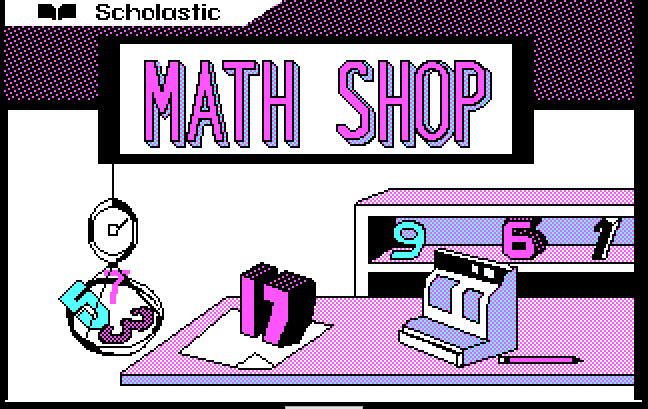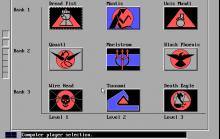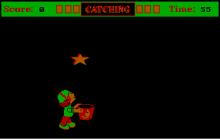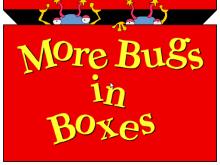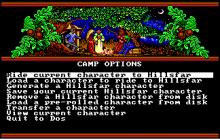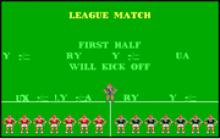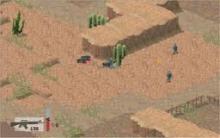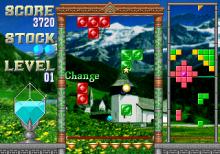Math Shop
How to play Math Shop
Each game uses different controls, Games can a combination of mouse,keyboard and Joystick.
Math Shop Description
The basic premise of Math Shop is a simple one. Children assume the role of shopkeeper, and serve customers who walk into their stores. Ten different stores are available for choosing from, with each store emphasizing a different sort of math problem. The Donut Store, for example, emphasizes fraction questions; the Boutique emphasizes practical "cash-register" questions; the Jewelry store emphasizes decimal additions; and the Pharmacy emphasizes percents.
Children use the arrow keys to walk an animated figure around to the ten different stores on the screen. (The tacit understanding is that the animated figure represents the child/shopkeeper.) A simple press of the space bar allows the animated figure to walk into any store.
The Math Shop game can be played in a "practice" mode, and in a "game" mode. The practice mode allows you to take as much time as you want in serving the customers. The game mode requires you to perform under pressure of the clock.
In the game mode, you open up all the stores in the mall, and you serve the customers by running back and forth solving math problems at the various stores. All the while new customers are coming into the stores. (The customers are represented by little figures in the store window.)
If ten customers line up in any one store, the customers get tired of waiting and all leave at once. The disgruntled, tired-of-waiting customers leave the screen with an appropriately disappointing musical sound.
Kids quickly catch onto this true-to-life business enterprise, and thrive on the effort to become model shopkeepers. You can't help but smirk when you hear a little kid urge a friend to, "Hurry up, or you'll lose some more customers!"
In the practice mode, you open up one store at a time, and play the game at your own leisurely pace. Customers do not keep flooding into the mall, so you have no distractions from taking care of the store.
The practice game can also be played with or without a timer. My own preference is to play the game without the timer. Many children will chaff at having to perform mental tasks under the watchful eye of the clock. Yet, for some children, the timer provides an added element of excitement.
As you serve customers in the various stores, the problems become increasing difficult. At the harder levels, the problems become quite challenging. But even the hardest problems can be solved in your head. There really is no need for pencil and paper in working through any of the problems. (In certain circumstances, pencil and paper could be called for as aids for individual students.)
For all its good qualities, Math Shop is the type of program that calls out for parental or teacher supervision. Or, better yet, parental or teacher involvement. The program teaches higher order thinking skills, so kids can't really be left alone to practice by themselves. An active, involved adult can be beneficial in helping children learn the tricks and intricacies of solving the problems in each of the ten stores.
By getting actively involved in playing the game, parents and teachers can bring to life the excitement and fun of solving math problems. And there's a warm feeling of teamwork when people work together to solve higher-order puzzles/problems.
Math Shop is the type of program you can get hours and hours of use from. In time, all players of the Math Shop game develop preferences as to which of the shops are their favorites. My own two favorite stores are the Lumber store, and the Number store. Both of these stores give you questions that really make you think. Each question is actually a puzzle of sorts, whose solution brings pangs of joy to those who solve them.
The documentation accompanying Math Shop says the disk is suitable for children in grades 6 and up. My own experience is that children in 3rd, 4th, and 5th grade, with solid arithmetic skills, could also benefit from the disk. Of course, the younger the child, the greater the need for supervision.
As a side note, I might mention that I have also used Math Shop quite successfully with mathematically gifted 1st and 2nd graders. To bring mathematics alive at such a tender age is one of the true gifts of personal computers. Yet, care should be taken never to impose this type of problem solving disk on those who are not ready for it.
The original Math Shop disk was so well received that three separate spin-off disks have been introduced by Scholastic. Math Shop Junior is intended for children aged 6 to 9. The layout and operation of the program is identical to the original Math Shop, with all the problems scaled down in difficulty.
Advanced Math Shop is intended for children aged 12 to 18, and develops pre-algebra and algebra skills. The harder levels of Advanced Math Shop present a challenge even to -- ahem -- math teachers.
Scholastic also sells Algebra Shop, which is the identical disk to Advanced Math Shop. Apparently the disk was first titled Algebra Shop when it was sold to schools, and then titled Advanced Math Shop when it was sold to homes.
Math Shop runs on any 64K Apple II, including the Apple II Plus, IIe, IIc, IIGS, and IIc+. A color monitor is not required. It also runs on the Laser 128 series of computers. IBM and Macintosh versions of the program are also available.
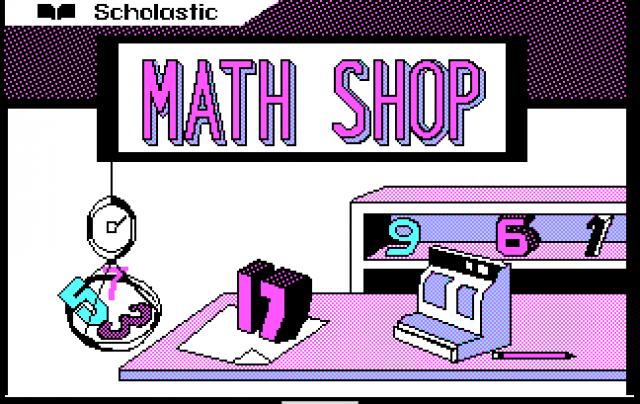
Math Shop - additional information







